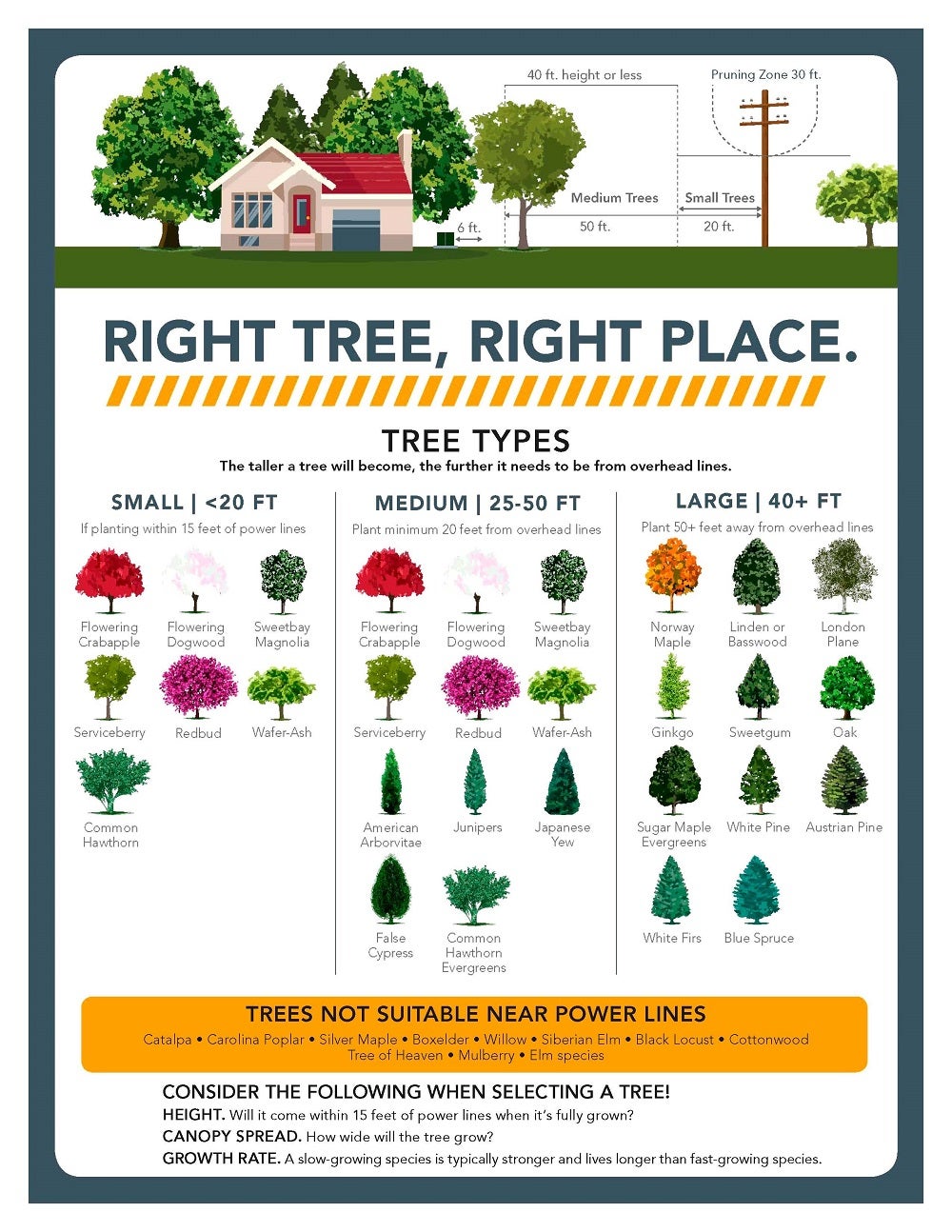Tree limbs and power lines aren't a good combination. HWEC service territory is beautiful and rural, with rolling hills and country scenes that include many trees. Because this area has a high density of trees, the cooperative was seeing a high number of outages and interruptions to your electric service due to tree contact with our power lines. In 2004, a tree trimming program was implemented, which has greatly reduced tree-related outages.
HWEC has established a four-year tree trimming cycle. Annually, the cooperative has a bidding process for qualified third-party tree trimming services. The HWEC board reviews the bids and selects the service provider. The contractor is required to complete the trimming process within the calendar year in order to maintain a timely cycle.
The cooperative's tree-trimming project is managed by Brent Schrock, HWEC right-of-way supervisor. Schrock is a certified utility arborist. All tree trimming is reviewed before and after the process. All cutting and trimming is required to be at arborist cut, which protects the tree, where economically feasible. Directional trimming not only eliminates the limbs from current contact with power lines but also strives to train the tree to grow away from lines.
All branches that are trimmed are chipped. Branches that exceed 5 inches in diameter are left at the base of the tree for the landowner to use as they see fit. All trees that are removed are also left on the property for the landowners use.
It is extremely unsafe for you to trim vegetation growing near power lines, even trees on your own property. Only specially trained tree trimming professionals should do this work. Please contact HWEC to assess the situation and arrange for qualified personal to trim around our electric lines.
There are many things to consider when selecting trees and landscaping for your home. Good tree placement and landscaping can enhance your property's value, and prevent costly maintenance or damage to your home.
Large trees should be planted at least 40 feet away from your house for proper root development and to minimize tree damage to your house. When planting a tree, consider your view, your neighbor's view, the location of your flower or vegetable gardens, and environmental conditions such as drainage, soil type, sunlight penetration, etc. The tree's height at maturity should also be compatible with utility lines.
Windbreaks should be evergreens planted on the west or north side of the house, approximately 100 to 150 feet and no more than 300 fee from the house. Deciduous (leaf dropping) trees should be planted on the south and/or west side of the house to cool in the summer and allow sun to enter the house in the winter. There are hundreds of species and cultivars of trees that can be grown in Ohio. Here are just a few suggestions from the Ohio State University Extension Service:
Small Trees:
Mountain Ash, Amur Maple, Tatarian Maple, Winter King Hawthorn, Washington Hawthorne, Flowering Crabapple, Japanese Maple
Medium Trees:
Red Maple, Sycamore Maple, River Birch, Flowering Ash, Ruby Red Horse-chestnut, Hardy Rubber Tree, American Hop-Hornbeam, Amur Cork Tree
Large Trees:
Sugar Maple, Ginkgo Kentucky Coffeetree, American Sweetgum, Tulip Tree, Pink Oak, Norway Maple

